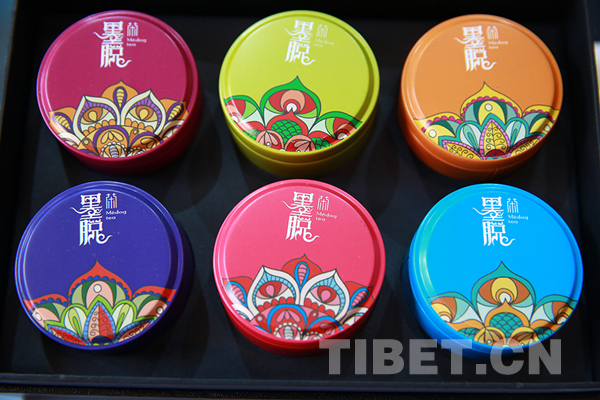Couple sow seeds of success in Tibet county
Nearly two decades ago, Zhang Jiming was still a farmer in a village in Jinan, East China's Shandong province. He never thought he would do anything else except tend to his crops, or travel anywhere too far from his fields.
He could never have imagined that he would become a teacher for farmers in Panam county in the Tibet autonomous region, on the other side of the country, helping the locals to grow new types of food and improve their way of life.
Zhang, 54, arrived in Tibet as one of the hundreds of people from Shandong who have offered their expertise to help the region's development since 2000.
In the past 17 years, Zhang and his wife, Han Zuoying, have lived in Panam, teaching local farmers to grow vegetables. Panam in Shigatse city is about 3,900 meters above sea level. Its dry and cold climate makes it difficult to farm vegetables at that altitude.
The couple headed to Panam because their village Party secretary, Shi Wenjing, was one of the local cadres sent to help Tibet in 2000. Shi was a big fan of Zhang's greenhouse planting technique, and he encouraged the couple to come to Tibet with him to share their farming skills and experience.
In 2000, seven couples, all from Zhang's village, went to Panam.
Zhang vividly recalls the county's situation back then.
"The road was muddy and there was no electricity. My wife and I used candles to see at night. That was what struck me most, seeing the locals live in such harsh conditions," says Zhang.
Another aspect of the local life soon hit him-Panam's tough climate meant that its residents could grow only potatoes, turnips and Chinese cabbage as vegetables.
"They didn't even recognize the seeds of tomatoes, water melons, green peppers or musk melons. They had never seen those in their lives," recalls Zhang.
In Panam, tomatoes cost about 15 yuan ($2.3) per kilogram. It was nearly four times the price of what Zhang was used to.
Fortunately for the locals, Zhang soon discovered that Panam's soil was actually suitable for growing vegetables, even at such high altitude. He could envisage his greenhouse techniques working in the area.
But many locals initially could not get used to planting in the greenhouses because it was "wet and hot inside", he says.
Language was also a major obstacle when he started to teach the Tibetans his farming skills.
"I barely understood a word of Tibetan. The locals also did not understand me when I spoke Mandarin," says Zhang. "But I still managed to teach them very successfully, through a combination of body language and eye contact. The locals were warmhearted people and they were very eager to learn."
Three months after Zhang's lessons, Panam's residents started to reap the rewards of their hard work. The first batch of farmers who planted tomatoes in greenhouses managed to earn more than 10,000 yuan each from their crops.
There are now 5,428 greenhouses in the county, with more than 100 types of vegetables growing in them. The local government built most of the facilities in the past 17 years, with the help of hundreds of farmers from Shandong like Zhang.
Zhang himself has taught at least 5,000 farmers how to plant crops in greenhouses. He has trained more than 70 local farmers to become specialists in the technique.
Among the seven couples who arrived in Panam in 2000 to help the locals, only Zhang and his wife stayed on for so many years.
"At the beginning, I thought life in this place was tough. But then I thought, 'if I left, who would teach the local farmers? They have not fully grasped the skills needed for greenhouse planting'. So we stayed. And we stayed year after year. Now we do not see our lives in Panam being any different from back home," Zhang says with a laugh.
The only regret he has for spending all this time in Tibet is that he was not able to see his son growing up. The boy was only 10 when his parents left Shandong. He is now working at an iron and steel company in Jinan.
Zhang says he will definitely be in Panam for a few more years. "I want to continue working here, to help upgrade local agricultural practices."
Your Comment
Name E-mailRelated News
-
;
-
-

-
300 kinds of Tibetan products debuted on the cultural & creative i
300 kinds of characteristic Tibetan cultural & creative products were presented at a cultural and creative expo, showing the profound traditional culture and regional culture of Tibet.
-
-
-

-
Intangible cultural heritage digitized for preservation in Tibet
A number of intangible cultural heritage items have been digitized for preservation purpose in southwest China's Tibet.
-
-
-

-
Creative products from Tibet attend expo in Beijing
Delegations including southwest China’s Tibet Autonomous Region will display their unique cultural products with ethnic characteristics to the public till Sept. 13.
-
Based in Lhasa, Tibet Vista is a Tibet travel agency that specialized in Tibet permit, and Tibet tours for both private and group travelers at a local price!
•4 Days Lhasa City Group Tour from USD 460 •8 Days Everest Base Camp Group Tour from USD 850 •15 Days Mt.Kailash Group Tour from USD 1780 •2016 Tibet Train Tours from Beijing, Shanghai, Chengdu, Xining,etc










